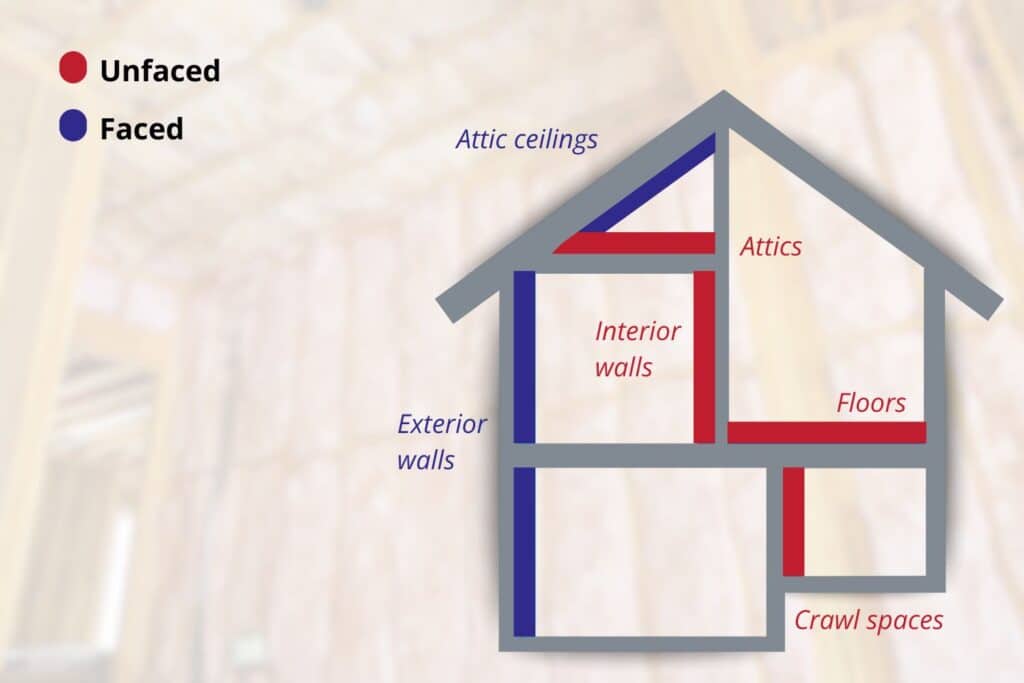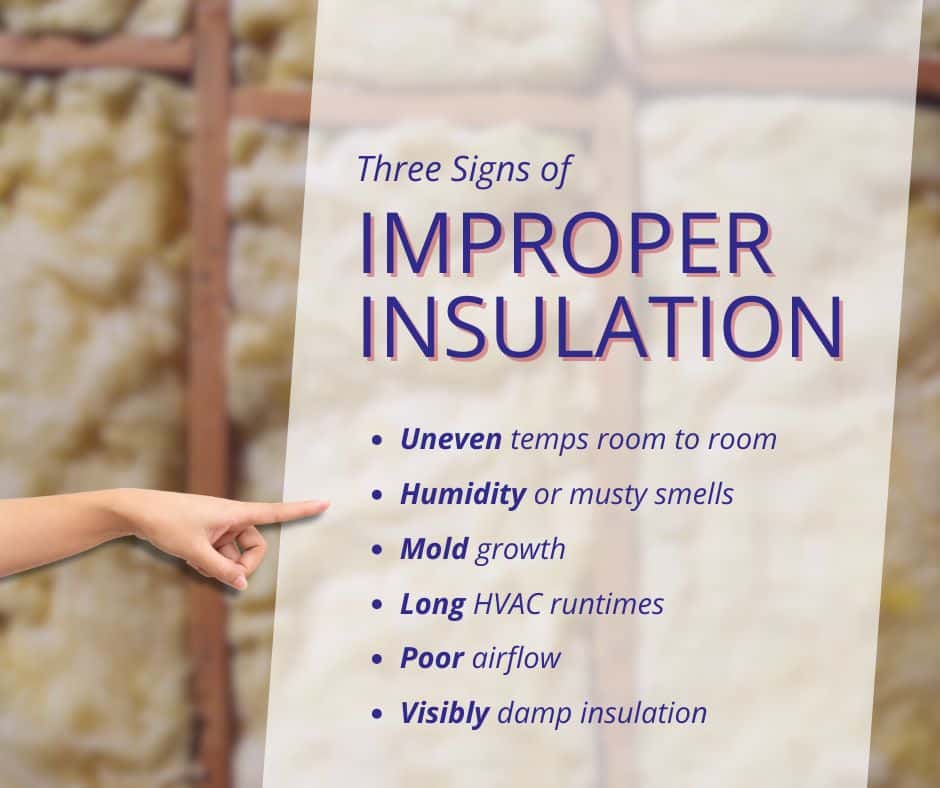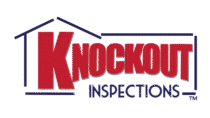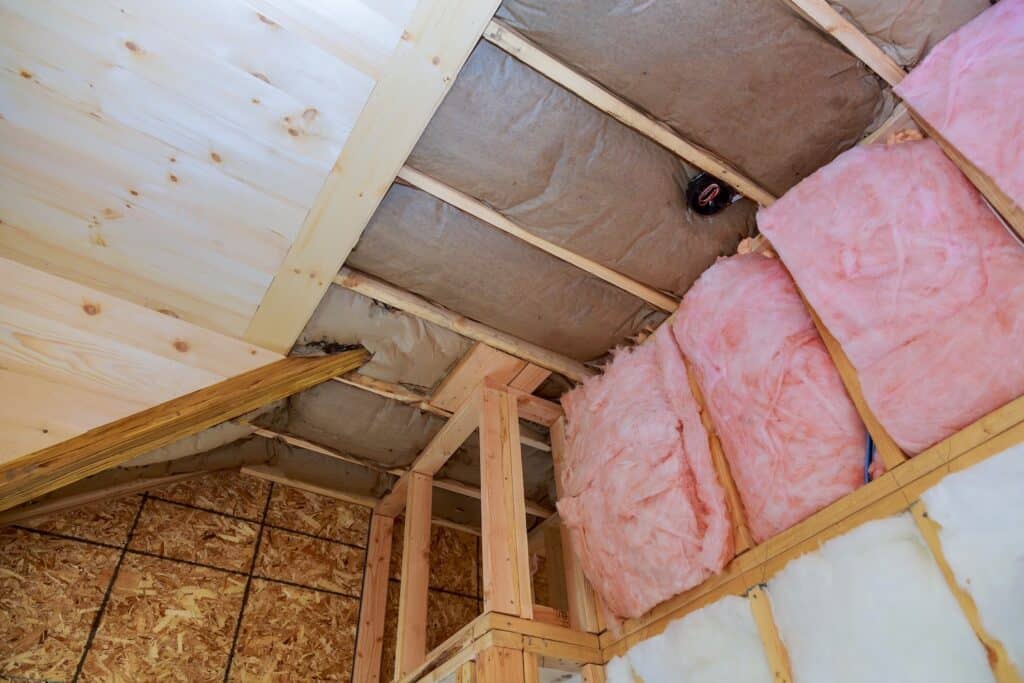This guide breaks down the difference between faced vs unfaced insulation, where each one belongs, and how these choices connect to other areas of your home’s performance.
Not all insulation is created equal. If you’re reviewing an inspection report, starting a remodel, or just trying to make your home more efficient, understanding the difference between faced and unfaced insulation can be a useful starting point.
The two types serve very different roles in controlling heat and moisture, and using the wrong one in the wrong place can cause issues that aren’t obvious until energy bills spike or mold shows up.
What Is Faced Insulation?
Faced insulation includes a vapor-retardant layer on one side. This facing is usually made of kraft paper or foil and is designed to help control moisture. The “face” typically faces the conditioned side of the space, depending on the climate and application.
Common uses:
- Exterior walls
- Ceilings below unconditioned attics
- Basements and crawl spaces
- Any space where moisture control is critical
In many cases, building codes require a vapor barrier or retarder on the warm side of the wall to prevent condensation inside wall cavities. Faced insulation often satisfies this requirement when properly installed.

What Is Unfaced Insulation?
Unfaced insulation is just the insulation material without any additional layer. It provides thermal resistance but no built-in vapor protection. It’s often used where moisture control is managed in other ways or where multiple layers of insulation are being added.
Common uses:
- Interior walls for soundproofing
- Attic floors where a vapor barrier already exists below
- Between floors in multi-story homes
- Over existing faced insulation to increase R-value
Unfaced insulation offers flexibility. It allows airflow when needed and reduces the risk of trapping moisture between two vapor-retarding layers.
Why This Difference Matters During an Inspection
During a home inspection or energy evaluation, we make sure there’s insulation present, of course, but we also consider whether the right type is being used in the right place.
Incorrect use of faced insulation, such as installing the vapor barrier in the wrong direction or stacking faced layers, can lead to trapped moisture and long-term damage.
Likewise, missing vapor protection in high-humidity areas may contribute to mold growth or material breakdown.
Here’s what we’re looking for:
- Vapor barrier orientation (should face the warm side of the space)
- Consistent installation without gaps, compression, or misalignment
- Whether insulation matches the use of the space and building envelope
- Signs of moisture damage near insulation, such as staining or microbial growth
- Insulation that is working with, not against, ventilation and HVAC
This kind of evaluation becomes especially important during energy audits, blower door tests, or when investigating indoor comfort problems.
Insulation, Energy, and HVAC
Insulation doesn’t work in isolation. It’s part of a larger system that includes HVAC performance, ventilation, and air sealing. If one part is off, it affects everything else.
Here’s how faced vs unfaced insulation plays into that system:
- Faced insulation adds moisture control, which is key for keeping attics and crawl spaces dry. If it’s installed without proper ventilation, though, it can trap humidity and increase the risk of mold.
- Unfaced insulation is better for layering or sound dampening, but it won’t slow vapor transfer on its own. That can lead to condensation when used in the wrong environment.
In both cases, insulation should complement the home’s air sealing strategy. Gaps or voids make even the best materials underperform. That’s why insulation assessments often lead to discussions about HVAC system load, ductwork leaks, or the need for better attic ventilation.
Signs the Wrong Insulation Is Being Used
Even if your home seems well-insulated, there may be problems hidden behind walls or in the attic. Here are a few common signs that insulation may be poorly chosen or incorrectly installed:
- Uneven room temperatures between floors or zones
- High humidity or musty smells in certain areas
- Mold growth in attics or basements
- Long HVAC runtimes or poor airflow
- Visible insulation that looks damp, compressed, or installed backwards

These clues often show up during inspection, blower door testing, or HVAC assessments. A small issue with insulation can reveal bigger inefficiencies across the home.
When to Assess or Upgrade
You don’t have to be in the middle of a renovation to take a closer look at insulation. In fact, insulation upgrades often provide better returns than other energy improvements.
Consider scheduling an insulation assessment if:
- You’re getting a home inspection before buying or selling
- You notice drafty rooms, high energy bills, or inconsistent airflow
- You’ve recently added HVAC upgrades but comfort hasn’t improved
- Your attic or crawl space hasn’t been inspected in years
- You’re planning energy improvements and want to prioritize smart changes
At Knockout Inspections, we often evaluate insulation during HVAC-focused inspections, energy efficiency reviews, and post-upgrade testing. The insulation type, condition, and installation quality all factor into how well your home performs as a whole.
Conclusion
Faced vs unfaced insulation is a difference worth knowing, since each has a role to play, but only when they’re installed with purpose.
Whether you’re building, upgrading, or troubleshooting a comfort issue, the type of insulation behind your walls affects more than just temperature. It influences moisture levels, air quality, system strain, and overall energy performance.
If you’re unsure what type of insulation is in your home, or whether it’s helping or hurting your HVAC system, schedule an inspection with Knockout. We’ll help you see the full picture.

